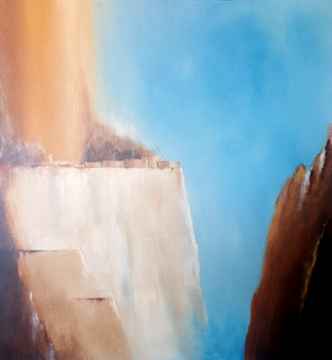Ed Wyatt Works

As a native of New Mexico, with its breathtaking illuminated by crystalline and dramatic light, Ed Wyatt understands the enchantment of the Southwest. Born in an area where the subject matter is truly unique, he joins an elite group of artists able to capture the vibrant color and intriguing shadows of the mountains, mesas and ancient rustic adobe structures.
Following successful careers as a photojournalist, television art director and graphic designer, Ed turned his attention to portraying the dramatic, yet spiritual quality of the landscapes and architecture of the Southwest in his serigraphs. Serigraphy is a term describing the silkscreen process when used for fine art rather than commercial purposes. It is the earliest recorded fine art printmaking technique having its roots in ancient China.
Unlike many of the serigraphs on the market today, these original prints are produced and hand-printed by the artist, in his studio on archival, pH neutral paper. The serigraphs by Ed Wyatt are produced in an edition, limited in number as indicated in the pencil notation below or on the image. The notation 1/55 means that this particular print is the first of 55 in the edition. By signing and numbering it, the artist is guaranteeing that there will never be more than 55 original serigraph prints of this image. Edition sizes vary in number.
There are different methods of producing a stencil for printing a serigraph. With the film method, which he uses, a very thin soluble film on a transparent backing is laid over the pattern and cut with a knife to trim away the areas being printed.
After cutting the film stencil, the film is adhered to the silk screen with a fluid and the backing is removed. After the stencil is placed on the screen, the ink is prepared to its desired color and proper consistency. A squeeqee is hand-pulled by the artist across the screen pushing the ink through the silk onto the paper below. The entire edition is printed with one color before dissolving the stencil and preparing the screen for the next color. The next stencil is registered for placement with the previous colors so that the imprint will fall into the right place. This becomes increasingly more difficult as the number of colors in the print increase. The edition size is determined by the number of “good” ones in the end. There may be slight imperfections due to the handmade nature of the printing process, and blends of color may vary somewhat from print to print.
Represented by galleries nationwide, his work has been selected for major exhibitions, won awards and is in private and corporate collections internationally.

